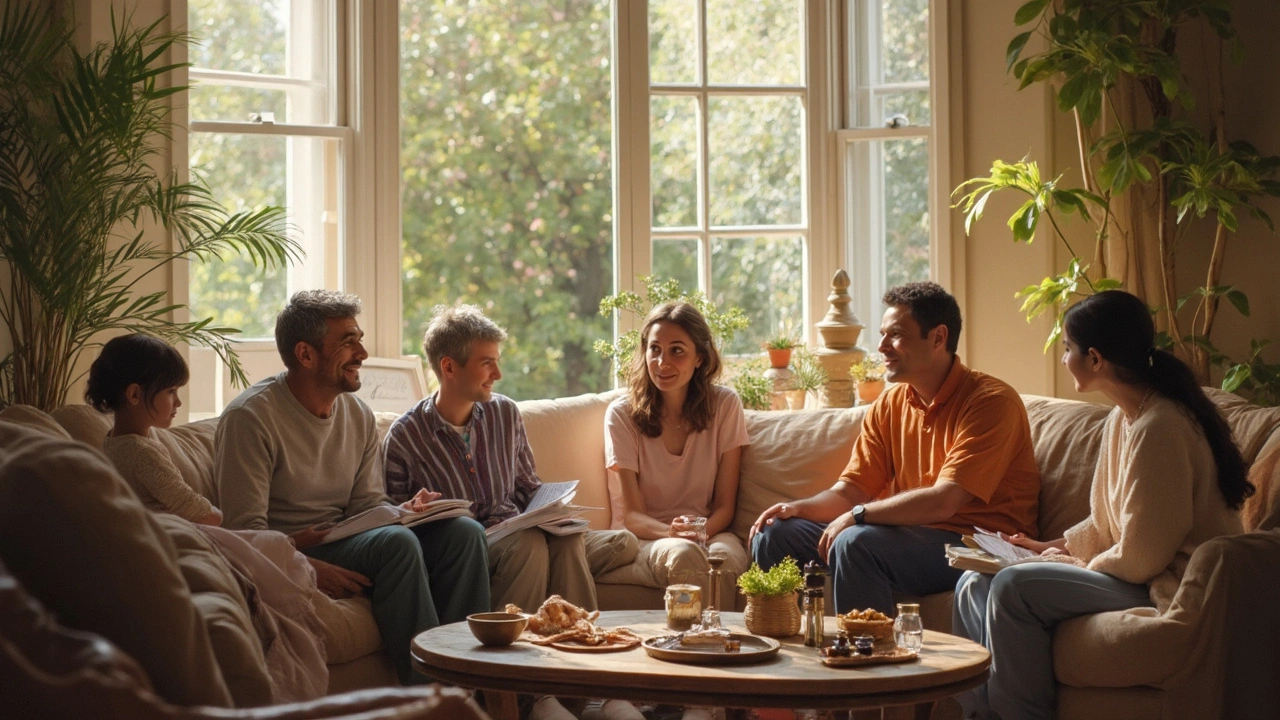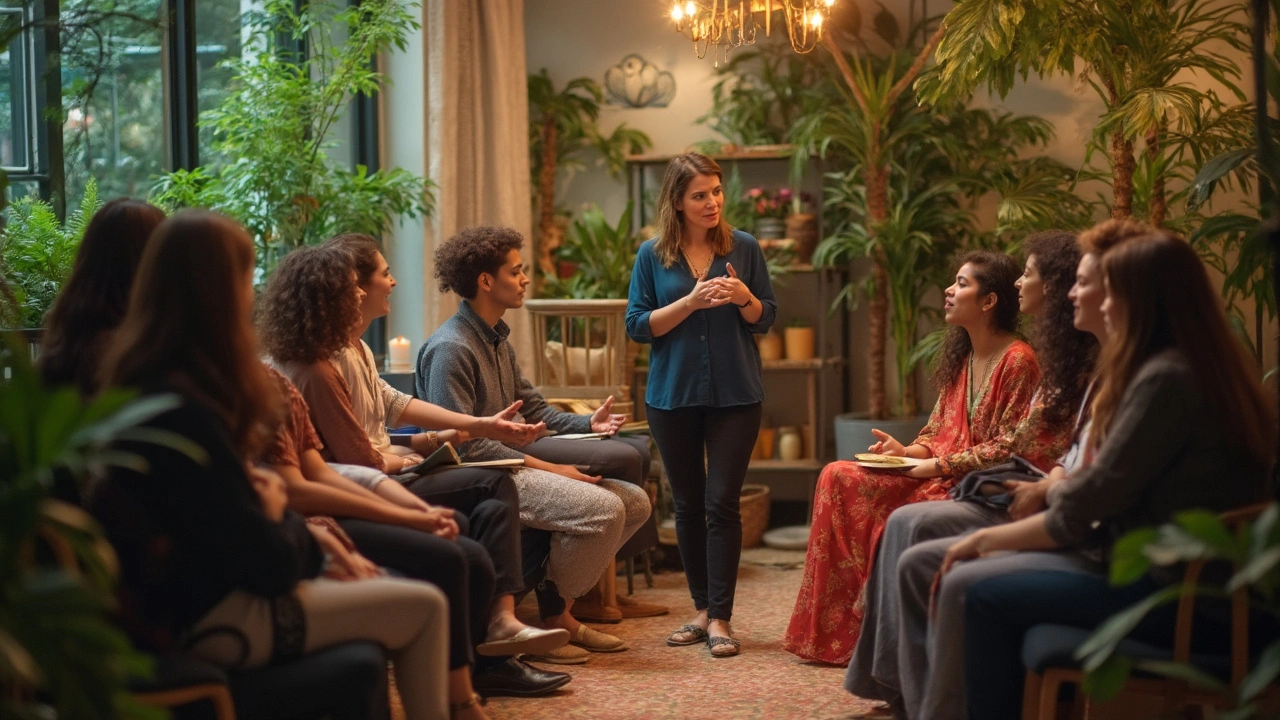Champissage: Benefits, Techniques, and How to Try Indian Head Massage in 2025
 Aug, 19 2025
Aug, 19 2025
Tension headaches, stiff necks, screen-heavy days—the modern world throws a lot at your upper body. It’s no surprise that Champissage, or Indian head massage, is suddenly showing up in wellness routines everywhere. But is it just another trend, or does this traditional technique actually deliver real results?
What is Champissage and Why Is Everyone Talking About It?
Champissage is a fancy-sounding word for Indian head massage—a practice that’s been around in some form for hundreds of years. It covers the scalp, neck, shoulders, and even the upper arms, which makes sense given where most of us carry stress. This isn’t the same as those “relaxing” scalp scratches you might get at a salon. The movements are deeper and more intentional, aiming to boost blood flow, ease muscle knots, and leave you feeling like someone hit your reset button.
The roots come from ancient Ayurvedic principles, and it was popularized in the West starting around the 1980s by Narendra Mehta, who combined traditional methods with western anatomy know-how. These days, you’ll see Champissage pop up at spas, wellness events, even some corporate offices—think quick, fully-clothed sessions that slot right into a busy workday.
Why the recent spike in popularity? A few things. First, COVID-era stress and remote work have sent demand for hands-on relaxation soaring. A 2024 wellness trend report named Champissage one of the top three "at-the-desk" therapies. Social media hasn’t hurt, either—the hashtag #Champissage racked up over 90 million views on TikTok early this year. It’s affordable, accessible, and you don’t need to strip down or set aside an hour.
How Does Champissage Work and Who Gets the Most Out of It?
So, what happens during an Indian head massage session? Most practitioners have you sit in a chair, fully clothed, and start with gentle neck stretches before moving to rhythmic kneading of the scalp and shoulders. There’s often a bit of tapping and pressure point work along the head and upper arms. A full session runs about 25–40 minutes—shorter than a typical Swedish massage—and you often feel lighter, looser, and less “foggy” right away.
What can you expect to actually gain from a session? Here’s a breakdown of the real-life benefits people report most often:
- Fast-acting stress relief—one session can drop heart rate and boost mood (per a 2023 study in the International Journal of Therapeutic Massage & Bodywork).
- Help with tension headaches, migraines, and TMJ symptoms, especially for those at screens all day.
- Improved sleep—regular sessions seem to help the brain wind down.
- Better scalp circulation, which some say helps with hair growth or scalp health, though clinical evidence is limited.
- No need to get undressed or commit to a lengthy appointment—fits into a packed schedule.
People who love it? Office workers, busy parents (let’s just say I’d live in a Champissage chair if the budget allowed), students, anyone dealing with tension or mild anxiety. That said, if you have neck injuries or uncontrolled high blood pressure, check with your doctor first.
| Champissage Benefit | Who Notices the Biggest Impact | When You Might Feel Results |
|---|---|---|
| Stress/Anxiety Relief | Office workers, parents, students | After 1 session |
| Headache/Tension Relief | Screen users, migraine sufferers | Usually within 1–2 sessions |
| Better Sleep | People with insomnia or high stress | After a week or two of sessions |
| Scalp/Hair Health | Anyone, especially with dry/itchy scalp | After several sessions |

How to Try Champissage, What to Expect, and Pitfalls to Avoid
Maybe you’re thinking about booking your first session, or even learning a few DIY moves for home. Here’s what you need to know to actually get started—and get the most out of it.
- Champissage isn’t just a scalp rub. Look for a qualified practitioner with training in Indian head massage—not just a generic “massage therapist.” In 2025, many reputable spas include their certifications on their website.
- If you’re squeamish about oil, relax—you can skip it or ask for a dry session. When oils are used, they may be tailored for your scalp/hair type.
- Don’t expect miracles after one session, especially if you’re carrying months of tension. Most get the best results after two or three regular sessions.
- You’ll usually sit upright in a comfy chair, fully dressed—no need to remove your shirt unless you want oil on your skin.
Trying it at home? You’re not alone—DIY scalp massage tools saw a 50% jump in Amazon searches last year. For a quick self-massage:
- Sit with shoulders relaxed and close your eyes.
- Place your fingers at your temples and use small, circular motions to warm up the area.
- Work your way up to the crown, then back down to the base of the neck.
- Apply gentle squeezing to the shoulders and light tapping to the back of your head.
- Keep going for five minutes, breathing deeply. Even brief sessions bring noticeable relief.
What can trip people up? Booking with an untrained provider (always check credentials), expecting instant fixes for chronic pain, and jumping back into work or screen time too soon after—give yourself a few moments of calm before re-engaging with distractions.
- Tip: Book Champissage on a Friday afternoon or after your toughest task, so you get the max relaxation benefit before your next high-stress window.
Mini-FAQ
- Is Champissage safe for kids or pregnant women? Yes, with modifications—just use lighter touch and avoid pressure points.
- How is it different from a regular massage? It’s focused on the upper body, fully clothed, shorter, and often combines light and firm pressure with specific scalp/shoulder techniques.
- Can it help with hair growth? There’s some evidence improved circulation helps scalp health, but it’s not a guaranteed hair loss solution.
- How often should I get it? For most people, once a week or every two weeks, though some get relief with monthly sessions.
- Will I feel groggy afterward? Most report feeling lighter and more clear-headed, though if you’re sensitive, schedule when you have downtime.

Next Steps
- First-timers: Book a session at a spa or practitioner with Indian head massage certification. Ask about oil-free options if you’re worried about mess.
- Busy parents & office workers: Try a 15-minute DIY routine at home or during a break—especially when headaches hit.
- Headache sufferers: Pair regular Champissage sessions with posture checks and time away from screens; results often stack up.
- DIY curious: Invest in a good scalp massage brush, but don’t expect equipment alone to replace hands-on techniques.
